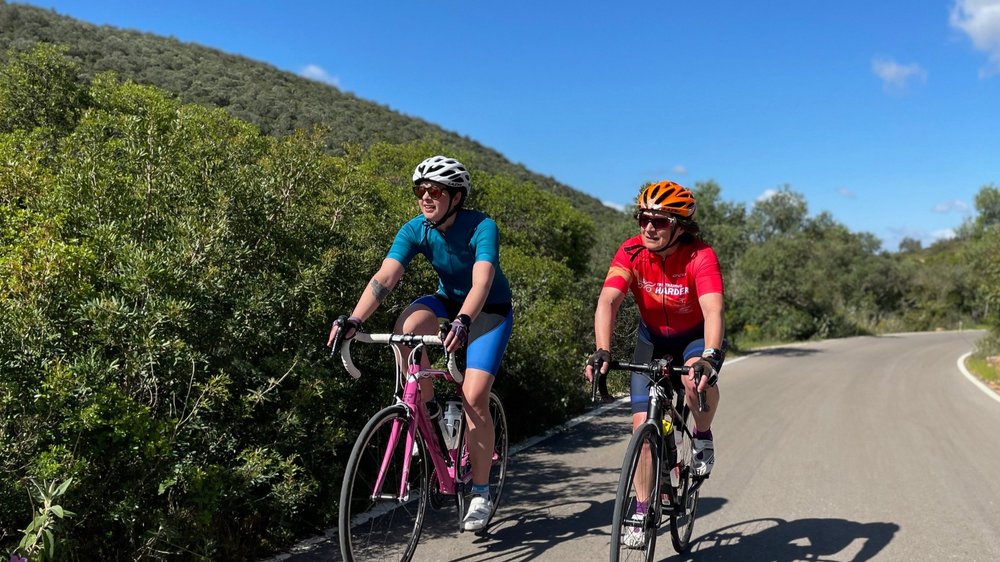Why do you need to fuel the bike, and what can you take?
A strong foundation of a healthy diet is a great starting point, but when training, it is crucial to ensure that energy used is replaced in a form which is readily accessible. Coach Denise looks at how much fuel is needed, in what form, and some other reasons to train your fuelling strategy well before race day.
Before we think about what you ought to be eating on the bike, it helps to have a refresh of the basis of all nutrition. As a triathlete, you will no doubt be well aware of the macronutrients that make up any diet: carbohydrates, fats and proteins. Before considering what to consume when riding, it is essential to have a strong foundation on which to build.
Carbohydrates are the primary energy source for the body, fats are important for growing cells, and the transfer of vitamins to the muscles and proteins are needed for muscle repair, recovery, and support of the immune system. These macronutrients can come from an omnivorous or plant-based diet, but all three are essential for a healthy system. A good, healthy diet with the right mix of macronutrients is the proper foundation for any training.
To maintain weight, there is a simple equation; energy in = energy out. The exact amount of energy out will depend on age, gender, base activity level and exercise done (Coach Philip looked at some female-specific issues on International Women’s Day) as well as the importance of energy availability. Get this fundamental part wrong, and your body will struggle to adapt, meaning you are breaking down rather than building through training. Looking at this, it is reasonably apparent that on a big training day, there will be more energy out, so there needs to be more energy in to fuel the effort. For example, a 3-hour bike ride at 200W average will utilise about 2,160 calories. Adding this to the base calorific usage means a total calorie demand of over 4,000 calories for the day, much more than a “regular” person would need to consume. Most people don’t need to eat over 2,000kCal for their activity level on a typical day!
Several apps and other tools track calorie usage in training; Myfitnesspal can link to Training Peaks to automatically calculate the calories used alongside the macronutrients and calories consumed. However, consuming sufficient calories, especially when training several days a week, can be difficult. Also, having the correct fuel type at the right time is critical for performance.
When you are training, the primary energy source will depend on the intensity and duration of the effort. A low-intensity short workout will predominantly use fats as the energy source. As the effort level increases above 60% and the duration extends, the main source of energy for the effort is Carbohydrate, which is stored in the liver as glycogen. The simplest way to keep the glycogen stores topped up is to consume carbohydrates, namely glucose and fructose. The body can absorb around 60g/h of glucose and 30g/h of fructose. With training, it is possible to increase the amount of glucose the body can process.
Working out how much Carbohydrate to ingest in a session is pretty straightforward. Taking the example above, someone cycling for 3hrs at 200W (using 2,160 calories), 1g of Carbohydrate equals 4kCal. Therefore, you would need 175g of carbohydrates per hour. This is significantly more than your body can absorb (90g/hr), even if you assume that approximately 80% of that energy will come from carbohydrates! So the aim is to reduce the deficit as much as you can.
Where the Carbohydrate comes from is down to personal preference; glucose and fructose are typically found in sports bars and drinks but can also come from solid food. There are many commercially available gels and sports drinks with a typical range of carbohydrates and calorie levels within them, and it is worth knowing what works for you. For example:
Gels typically contain around 22-30g of carbohydrates with a calorie level of about 80-120 calories per gel.
Powders to make up sports drinks allow for different strengths of the drink to suit. The recommendation in a 750ml sports bottle is generally to be at 45-50g carbohydrate and 175-200 calories.
Using drinks to contain fuel has the advantage of replacing the water lost in sweat and being a possible carrier for electrolytes. Everyone sweats differently and can also tolerate different levels of dehydration. Ideally, aim to replace 50-70% of liquid lost with a drink containing electrolytes to maintain acceptable levels of dehydration. However, different people do better with varying concentrations of carbohydrate drinks – don’t just assume they will all work for you.
So, eating and drinking on the bike are vital for keeping energy levels high. This has the advantage of not only ensuring that the bike leg of a race is well fuelled, but it can also ensure that you are not as energy depleted when starting the run and so can start strongly, then move onto the fuelling strategy for the final race leg. Running when energy depleted is clearly possible but will lead to fatigue as fuel for the run needs to come from protein synthesis from muscles or, more commonly seen, slower run splits.
As everyone knows, there should be nothing new on race day. Training with the same fuelling strategy as planned for the race will help adapt the body to the absorption of carbohydrates while exercising. It will also allow you to try different brands of gels or drinks and other carbohydrate sources to see what works best for you. After several hours on the bike, you might find yourself craving something savoury rather than another gel. Practising this in training means this can be included in the fuelling strategy and does not surprise you in the race.
In addition, a good base diet plus a good training fuelling strategy will help with consecutive training days, reducing fatigue over time when training ramps up.
Finally, if you’ve trained with the preferred fuel, then you know where you plan to store it, how to get the packets out of which pocket and where the empty packets go; this is all second nature, and you can focus on using the fuel most effectively to maintain bike speed.

Denise has been coaching triathletes since 2019 as a coach at her local triathlon club in West Lothian. Between 2019 and 2022, Denise was the Head coach in the club, working with a team of coaches to support and develop triathletes with a wide range of capabilities, completing her BTF Triathlon Level 2 coaching qualification in 2021.
Denise joined Tri Training Harder as a coach in 2021, building on the qualifications through the experience and knowledge passed on by the coaching team.
In 2019 Denise set up and continues to run her own Jog Scotland running group, a mixed ability group of runners who meet weekly. This delivers on her passion for helping people to do much more than they think they can.
Visit Denise's
Coach profile
We’re here to help
Tri Training Harder are one of the leading Triathlon coaching providers in the UK, using our wealth of experience to unite scientific and technological research with already well-established and successful best practices, to create a formula for triathlon and endurance coaching that works.
The result is an honest, dynamic, yet simple new way of constructing an athlete’s training to allow them to reach their potential.
If you’re planning your next season, just starting out in the sport or are looking for extra guidance at the very top end of the field, we are here to help, and our coaches would be delighted to hear from you. You can contact us via the website, and one of the team will be in touch.

